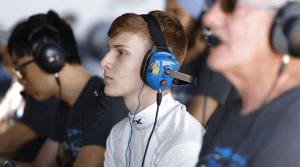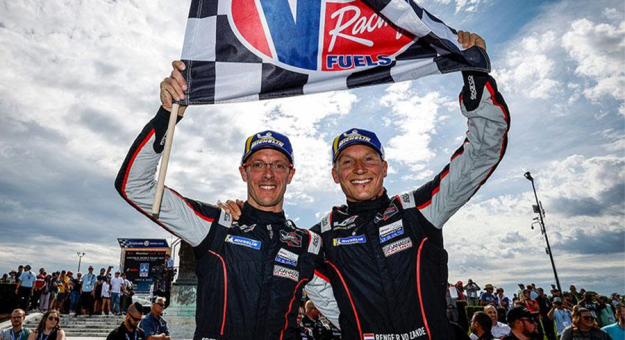DAYTONA BEACH, Fla. – If there’s one thing every racing driver craves, it’s seat time. Simulators are a valuable learning tool, but nothing helps a driver improve their craft more than time spent on track behind the wheel of a real racing car.
That’s part of why several IMSA WeatherTech SportsCar Championship drivers also participate in other forms of sports car racing around the world, including the FIA World Endurance Championship (WEC), the European Le Mans Series (ELMS) and the Asian Le Mans Series (ALMS).
Whether it’s a veteran pilot like Sebastien Bourdais or Renger van der Zande, or a promising young up-and-comer like Josh Pierson, many racers find value in just the act of driving – anytime, anywhere.
Other IMSA full-timers who have competed internationally this year, including in the 2022 24 Hours of Le Mans, include Pipo Derani, Richard Westbrook, Filipe Albuquerque, Ricky Taylor, Jordan Taylor, Jan Heylen and Antonio Garcia.
Much is different for those drivers when they are moonlighting from their IMSA “day jobs” – most fundamentally, the racetracks and the style of racing, not to mention things like food and local culture. The common denominators are a similar competitive environment, along with the opportunity to learn and simply gain a different kind of experience that can be filed away for later use.
On the surface, a driver of Bourdais’ pedigree doesn’t need any extra practice – the 43-year-old Frenchman won four IndyCar titles and has notched 10 victories in North American sports car competition. Yet he has almost always dovetailed his primary employment with some kind of international sports car program on the side.
This year, Bourdais has won three races in the WeatherTech Championship paired with van der Zande in the No. 01 Cadillac Racing Cadillac DPi-V.R. He’s also competed in every WEC race in an ORECA Le Mans Prototype 2 (LMP2) fielded by Vector Sport.
“My focus is with the Ganassi Cadillac IMSA program, but this was too good to pass up because it fit really well with my schedule and I want to get ready for the future with racing a prototype at Le Mans again,” Bourdais said.
On Sunday, Bourdais will have the unique opportunity of sharing the Vector Sport ORECA with IMSA teammate van der Zande in the WEC 6 Hours of Fuji in Japan. It’s a rare chance to validate their working partnership in a different car and a completely different environment.
“Working with Seb this year, we’ve developed a very good partnership,” van der Zande stated. “He’s very detailed with setup and I’m a bit more ‘plug and play,’ let’s say. So hopefully it will be easy to jump into the Vector LMP2.”
As if Bourdais and van der Zande don’t already have enough on their plate, both are heavily involved in the testing of Cadillac’s V-LMDh prototype that will be campaigned in IMSA and WEC next year. But you won’t catch them or any other driver complaining about the opportunity for additional seat time.

Pierson is at the opposite end of the experience spectrum. The 16-year-old wanted to pursue a career in open-wheel racing, but his driver coach Stephen Simpson (a three-time winner in WeatherTech Championship competition and current IMSA Michelin Pilot Challenge driver) convinced him to test for the United Autosports sports car team.
Pierson signed with UA to run the full WEC LMP2 season, teamed with two other drivers running combined IMSA/WEC schedules – Oliver Jarvis and Alex Lynn. Pierson later added a full slate of WeatherTech Championship LMP2 races for PR1 Mathiasen Motorsports to his calendar. He currently lies sixth in the standings, with a pair of fourth-place finishes as his best result heading to the WeatherTech Championship season finale, the Motul Petit Le Mans, on Oct. 1.
Meanwhile overseas, Pierson became the youngest-ever starter in the 24 Hours of Le Mans in June, and he teamed with Jarvis and Paul di Resta to claim the LMP2 class victory in the 1000 Miles of Sebring in March, making him WEC’s youngest race winner.
While Pierson is driving an ORECA chassis in both series, there are slight differences in specification. In addition, the IMSA car utilizes Michelin tires, with the WEC version running Goodyear.
“With IMSA, we’ve just been lacking the missing piece,” Pierson said. “We’re very close to a podium or a really good result, but a couple misfortunes have held us back a little bit. We’ve been consistently fast in practice; it just hasn’t come together in the races for us.
“I think I’m able to transfer quite a lot (between series),” he added. “There’s a lot of information that carries over, and while the cars may not be identical, I can still carry over certain things and certain techniques when it comes to driving the car. But it’s a very minute difference and I’m kind of able to carry over and continuously work on it. It does help both ways.”
